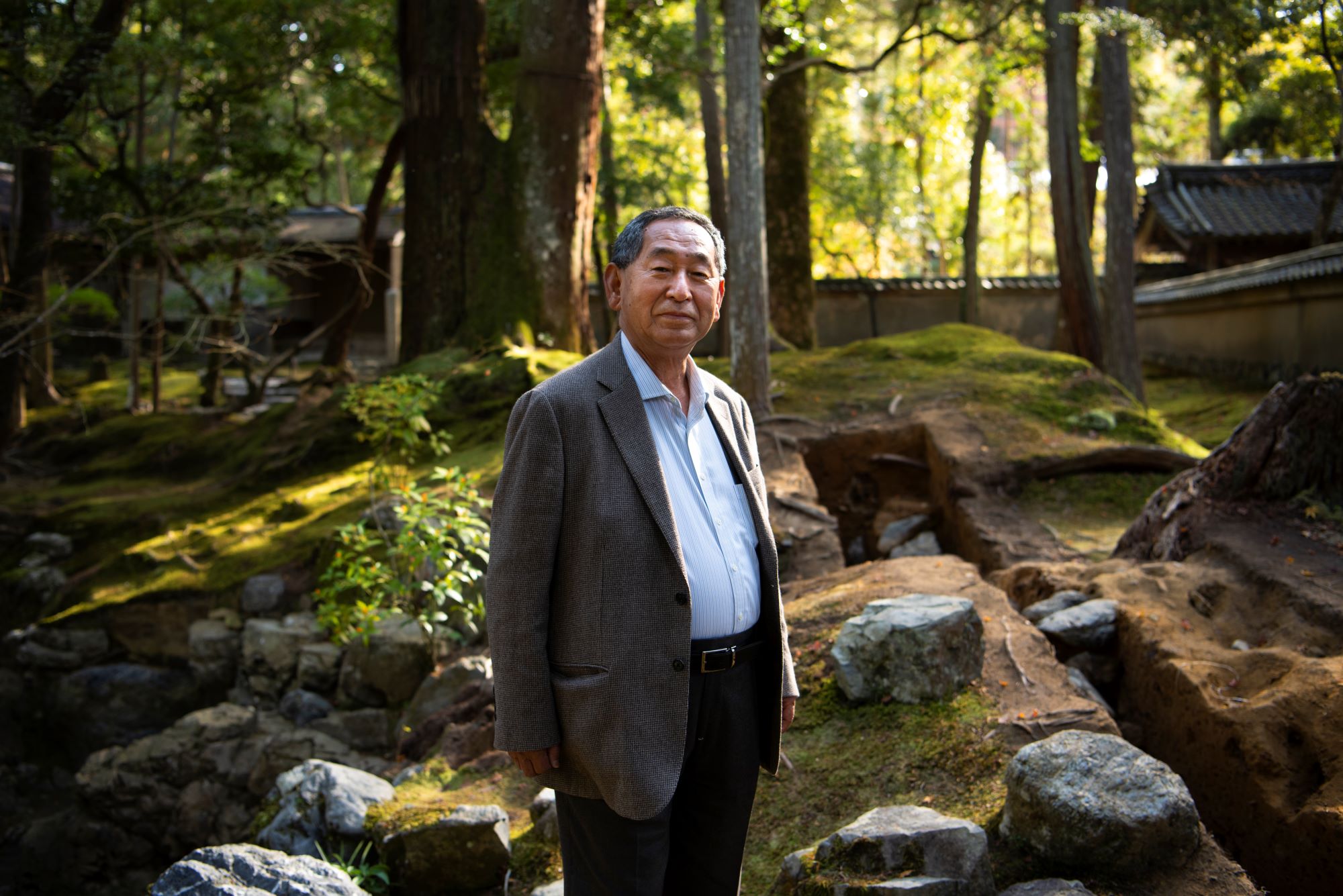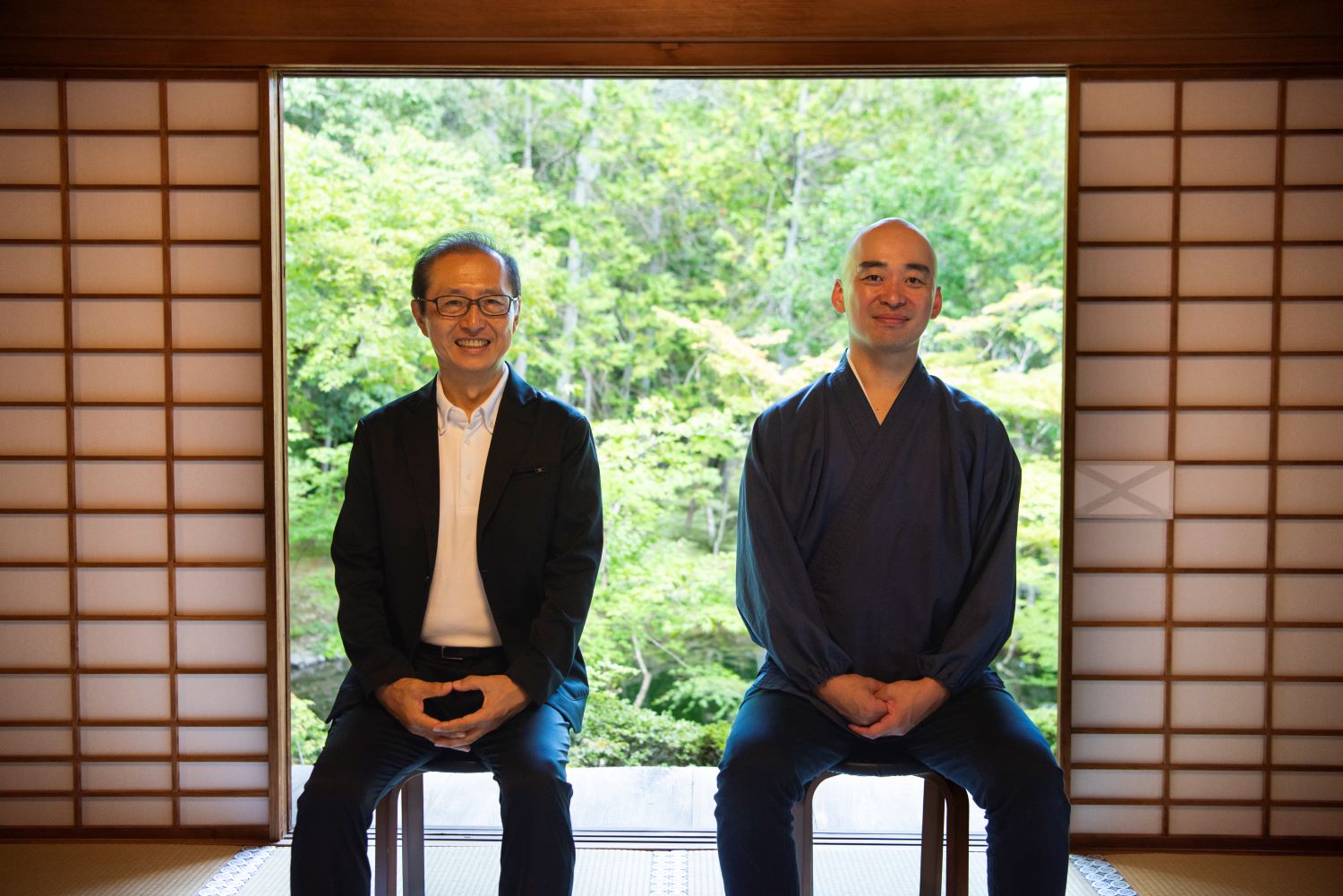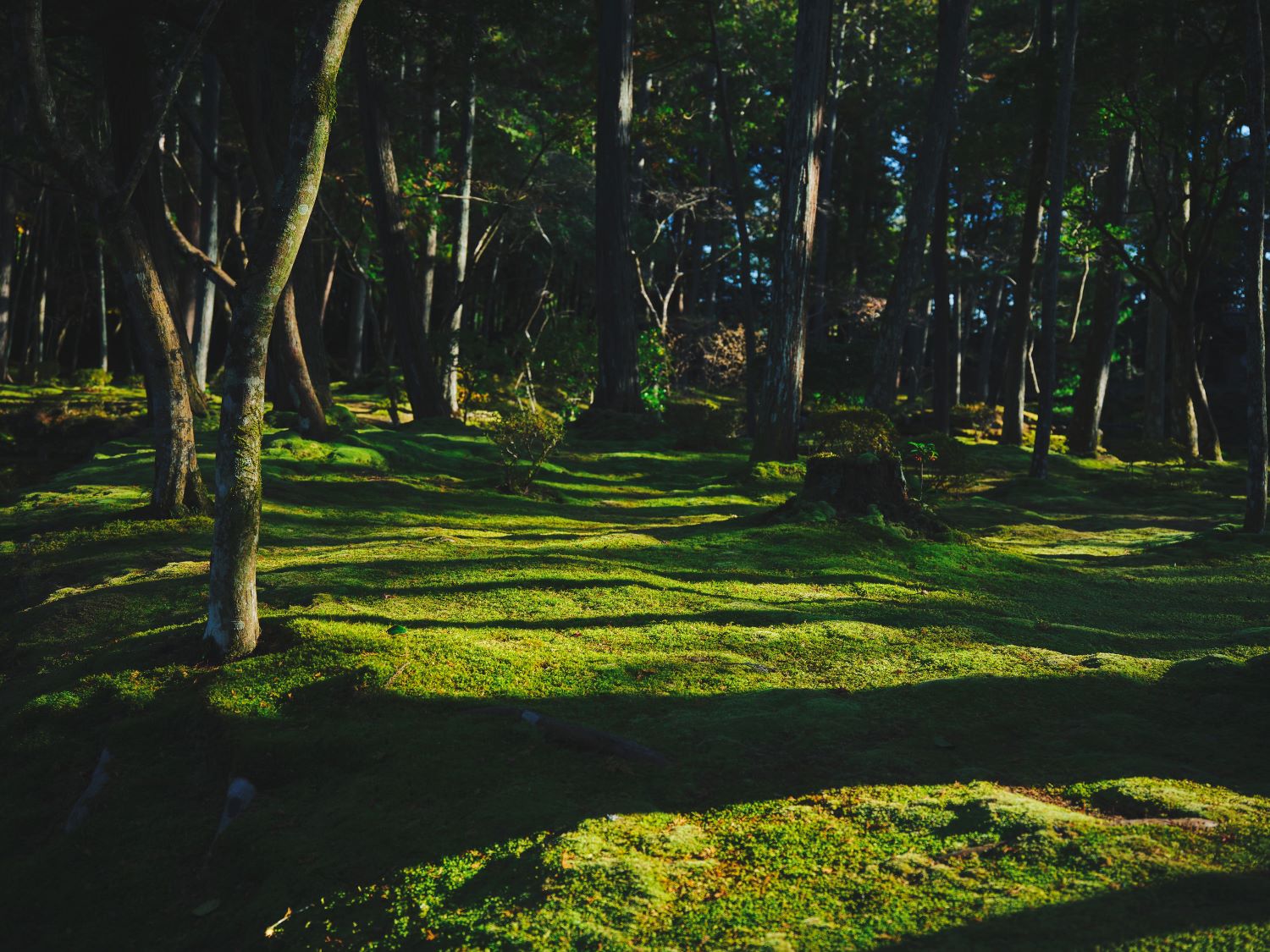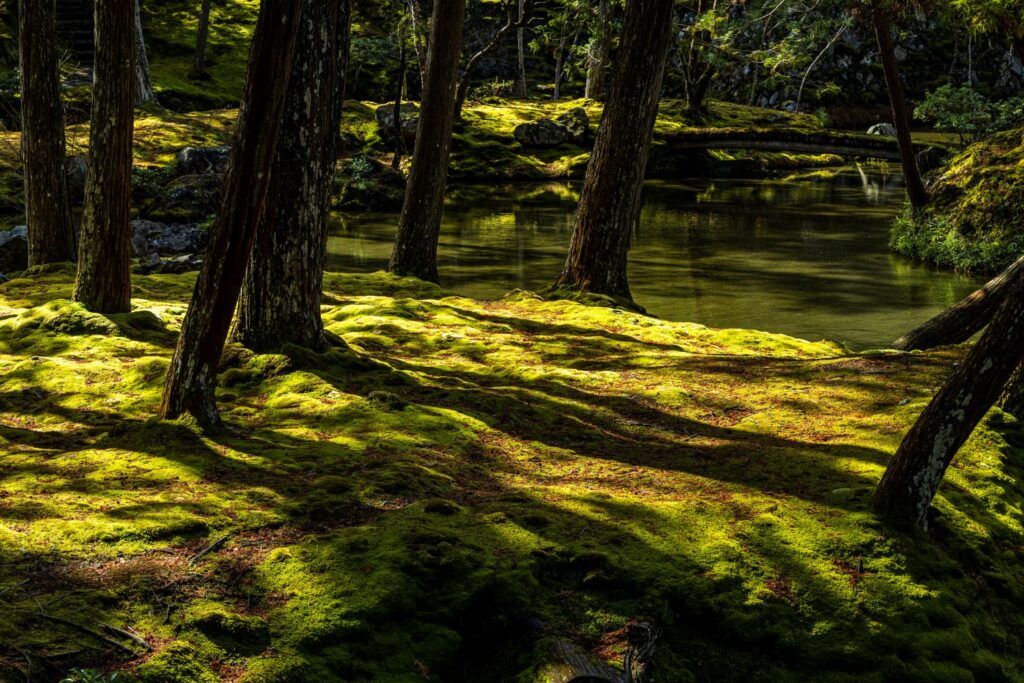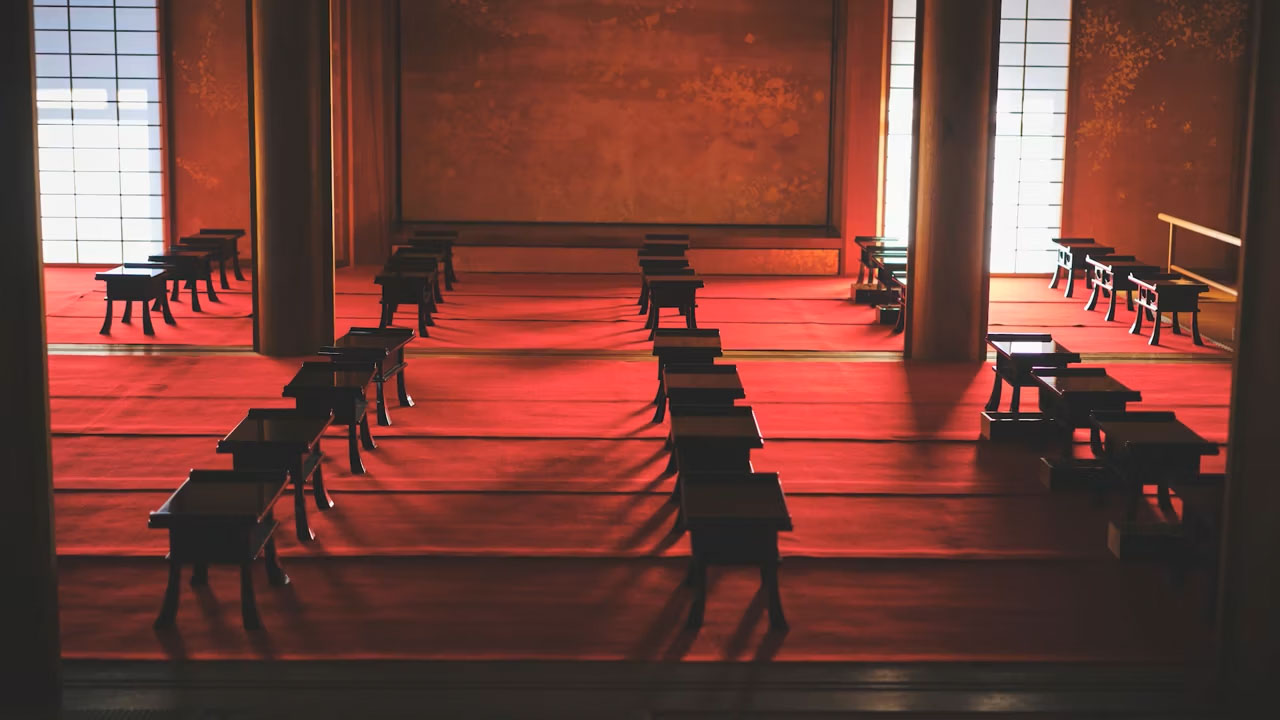2025.10.25
The Genii Locorum of Saihoji
(Second Part)
Amasaki Hiromasa
History Etched Into the Earth
The ancient Romans believed that all locations were inhabited by genii locorum —the protective spirits of places. The multilayered nature of time is a key concept for understanding the history of Saihoji. And looking over the long history of Saihoji we can feel that it is exactly such kind of place.
Based on the theme of the multilayered nature of time, Professor Amasaki delivered a lecture exploring the history of the Saihoji garden from the perspective of landscape architecture. The first part of the lecture focused on the innovative aspects of the garden introduced by Muso Kokushi, who restored the temple in the 14th century. This second part will examine what role Saihoji played in people's lives at that time, and consider the significance of the canal restoration project currently underway. (Click here for the first part)
Amasaki Hiromasa
Landscape architect, garden designer, professor emeritus at Kyoto University of the Arts, and honorary director of the Research Center for Japanese Garden Art and Historical Heritage. Born in 1946. After graduating from the Kyoto University Faculty of Agriculture, Professor Amasaki apprenticed himself to a landscaping contractor in Kyoto, where he gathered experience in many different work settings before he set up his own business. At the same time, he has spent many years teaching a great number of students about garden design and the history and culture of landscape gardening. As a subject matter expert, he has also led the conservation and restoration of cultural property gardens throughout Japan. In 1992, the Japan Institute of Landscape Architecture presented him with an award, and in 2014, the City of Kyoto recognized him as a Person of Cultural Merit.
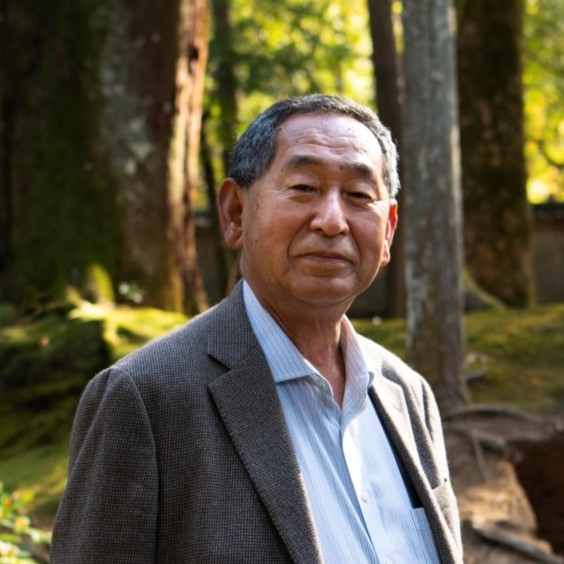
The Historical Saihoji as Presented in the Literature
Wherever Saihoji appears in the literature, it is celebrated for the views it offers, described as being so magnificent that no human hands could have created them. Many articles express admiration for the temple’s flowers, with one text even mentioning how the imperial family admired the cherry blossoms from a boat in the pond. Looking at flowers while sitting in a boat was one of the most popular pastimes for the imperial aristocracy. Shoguns Yoshimitsu (1358–1408) and Yoshimasa (1436–1490) of the Ashikaga Dynasty are also known to have visited the temple.
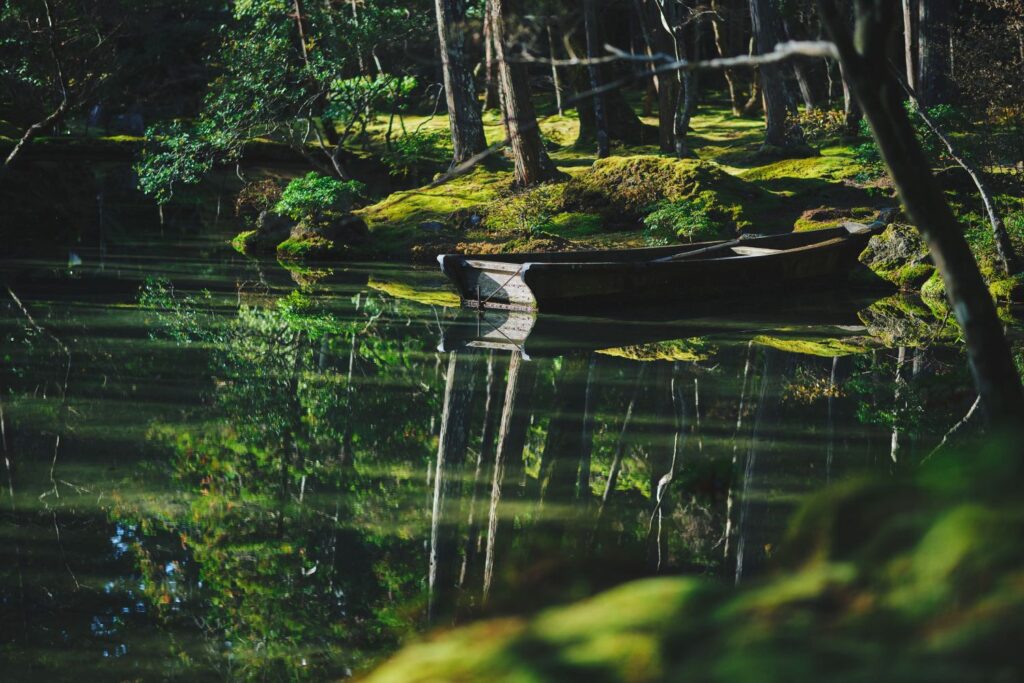
Cherry blossoms were the main attraction for the visitors, but by Yoshimitsu’s time, people also began coming to see the fall foliage. Yoshimitsu himself was, I might say, an earnest man and a devout Buddhist. He came to Saihoji to practice zazen meditation, which he undertook with great enthusiasm. He would meditate, take a break, and then continue meditating into the night. He respected Muso Kokushi and spent almost all of his time while visiting Saihoji at the Shito-an zazen meditation hall, ardently practicing zazen meditation.
Ashikaga Yoshimasa, on the other hand, appears to have appreciated the garden, and while he may have visited Shito-an, there are no records indicating that he ever practiced zazen. What was impressive about Yoshimasa was that after he visited the upper tier of the garden, he carried on to climb up to the Shukuentei Pavilion. The records show that it was an arduous climb, leaving him breathing raggedly, despite being a young man in his 30s. After enjoying the view from the Shukuentei Pavilion, he climbed back down and boarded a boat to savor the flowers.
Both aristocrats and warriors frequently visited the temple in those days, and the literature tells us what they enjoyed about the garden.
Saihoji: A Major Influence on the Art of Japanese Gardening
Yoshimasa loved the garden at Saihoji so much that when he built the Silver Pavilion in Higashiyama, he not only used the structure of the Saihoji garden as a reference, he named the buildings on the temple grounds after the buildings at Saihoji. The similarity in the spatial composition between the two gardens bears witness to how deeply Saihoji fascinated him.
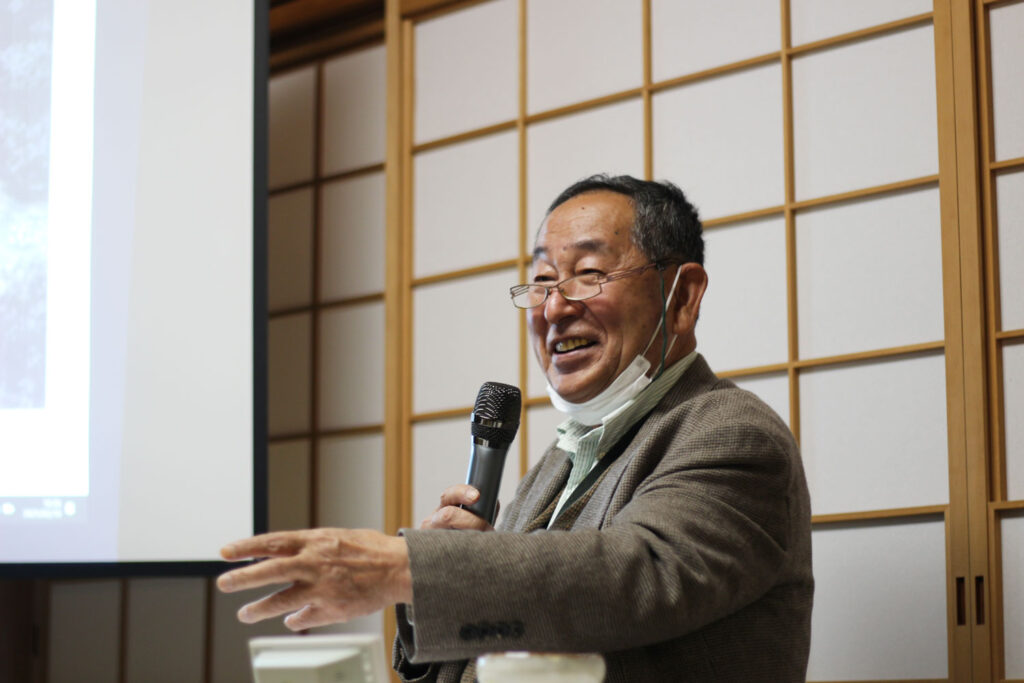
When the Onin War (1467–1477) broke out, the Western Army burned Saihoji down to the ground. The garden fell into disrepair, and the pond dried up. Because he was devoted to Saihoji, Yoshimasa did his best to restore the temple.
According to records from 1480, weeds were removed and the water in the pond was replenished in anticipation of a visit by Yoshimasa. Another 10 years later, the records state that Yoshimasa was working to restore the temple to its previous state. His efforts resulted in the revival of the Shito-an zazen meditation hall. This marks one of Saihoji's periods of restoration.
In 1534, the flames of war once again burned down the temple, but it was immediately restored. The painted screen below shows how the temple appeared after this restoration, and it includes a running waterfall. As the painting only shows how it appeared after the restoration, it is unclear what the original waterfall looked like.
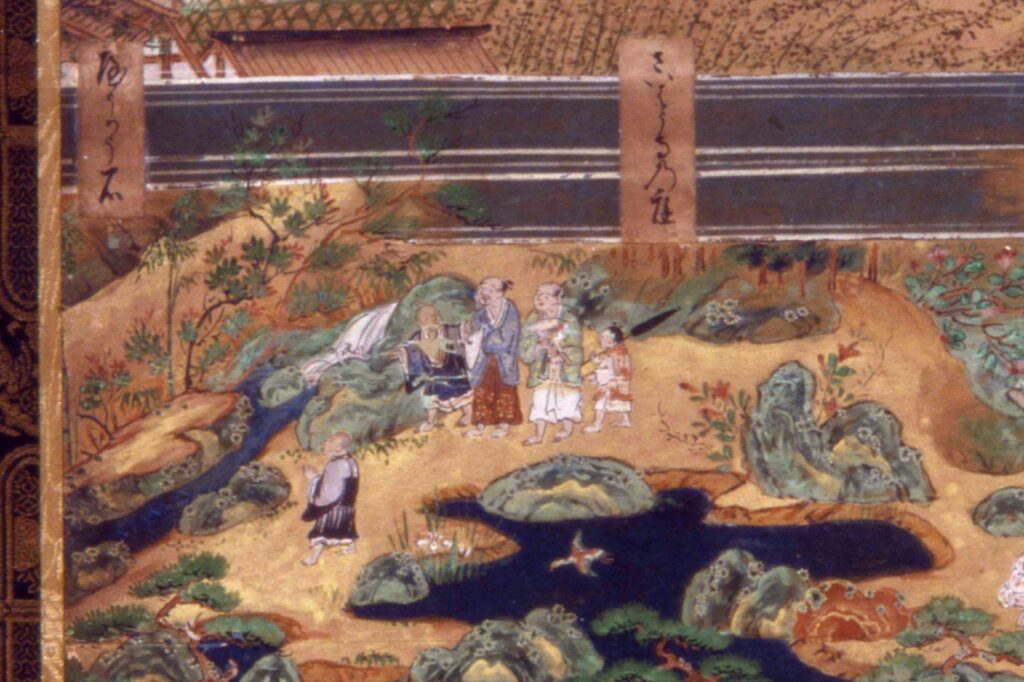
Records indicate that, following the restoration, Oda Nobunaga was also involved in the reconstruction. This shows how, although the temple was restored to look like the picture in the painted screen, efforts continued to be made to restore the garden to its original state before it succumbed to the flames of war. In other words, all eyes were upon Saihoji. The Saihoji garden had been recognized as one of the finest in all of Japan ever since it was first created in 1339, and as such, it continued to influence other gardens even after its destruction and restoration.
Painstaking Research to Restore the Waterways
Through the combined efforts of a great number of people, there is currently a project underway to restore the canal around Saihoji’s great, sacred stone known as the yogoseki. The garden path, the canal and the torii gate will all be restored.
In addition to being recognized as a World Heritage Site, Saihoji has been designated both a Japanese Historic Site and a Special Place of Scenic Beauty— the highest possible designation for a Japanese garden. It is important to recognize that even among famous sites, Saihoji holds particular significance.
If any work is to be done on a significant cultural property, a survey must first be conducted, covering all available documentation, including literature, paintings, and photographs, up to materials from the present day. It is of fundamental importance not to start construction work without sound justification.
In 1955, the scholar of Japanese gardens Mori Osamu made a survey drawing of the temple. It included a note referring to the traces of a water channel, indicating that evidence of canals had been discovered. The excavations currently underway based on this information have uncovered traces of canals from two different periods: the Muromachi Period (1336–1573) and the early modern period.
In addition, a survey diagram from 1922 shows that the garden path was located in a different place than it is today. We have been working on restoring this older path, aiming to complete construction in March 2025.
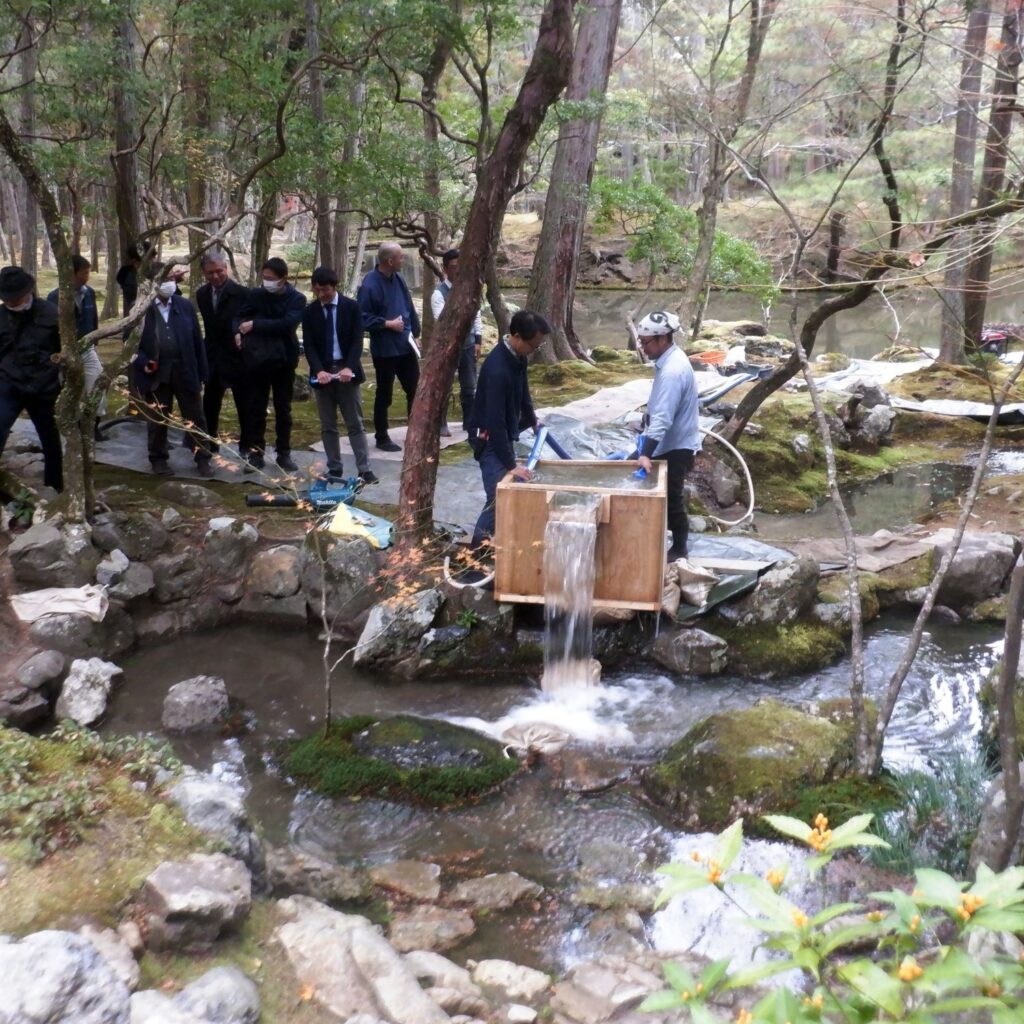
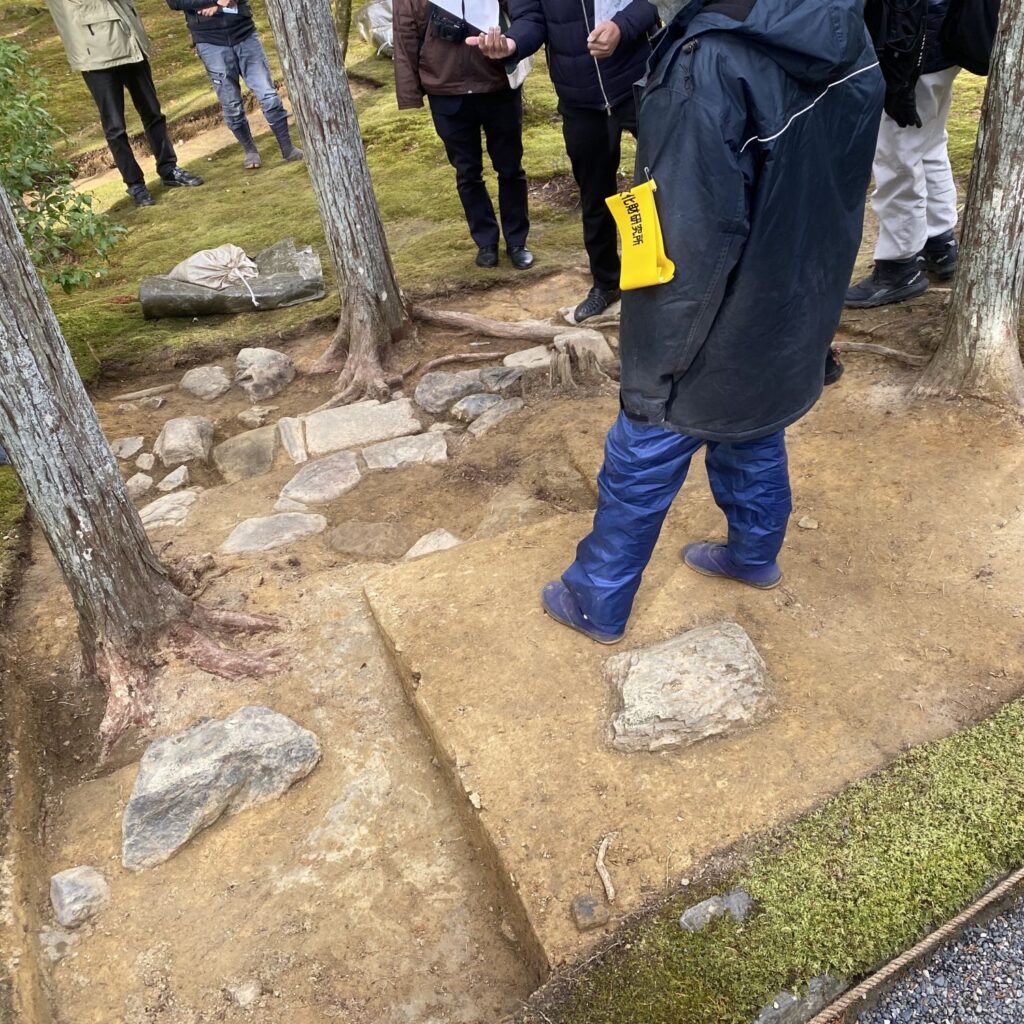
Excavations Reveal the History Etched Into the Land
In addition to documentary research, archaeological excavation is also important.
It is through excavations that we can uncover the history etched into the land, including minute details such as what the original terrain looked like, what kind of construction work was carried out, how ponds were dug, and how stones were laid.
As we dug deeper during this excavation, we found traces of the original canal, quite far below the surface. We also discovered a canal from the Edo Period (1603–1867), but this was at a shallower depth, as well as traces of canals from the modern period at an even shallower position. After some discussion, we eventually decided to restore the canals of the Edo Period, in order to protect the deeper remains from the Muromachi Period. Our goal was to restore the flow of water to that depicted in the “Painted Screen of Famous Places in the Capital.”
Naturally, we will also conduct excavations of the torii gate and garden path. The gate appears in a photograph from the modern period. Using that photograph as a reference, we carefully examined the size of the gate on site.
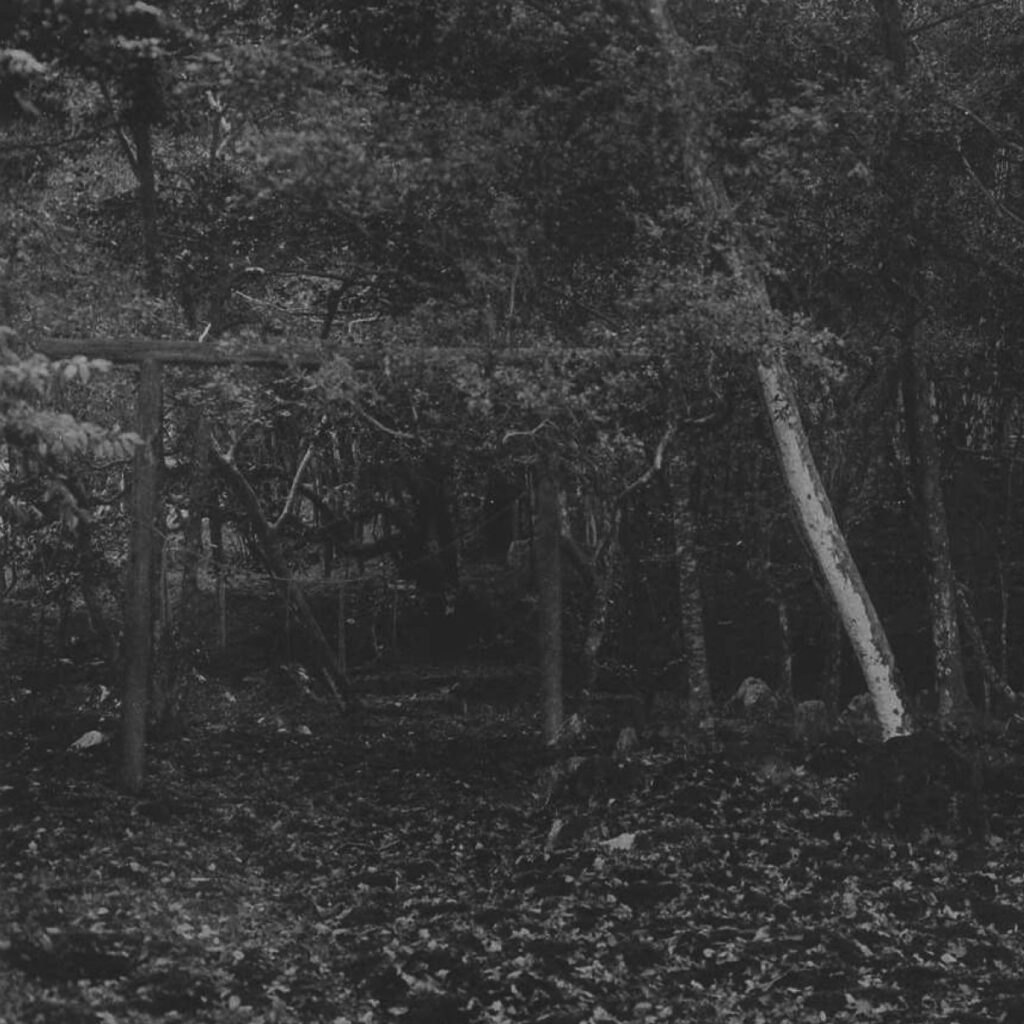
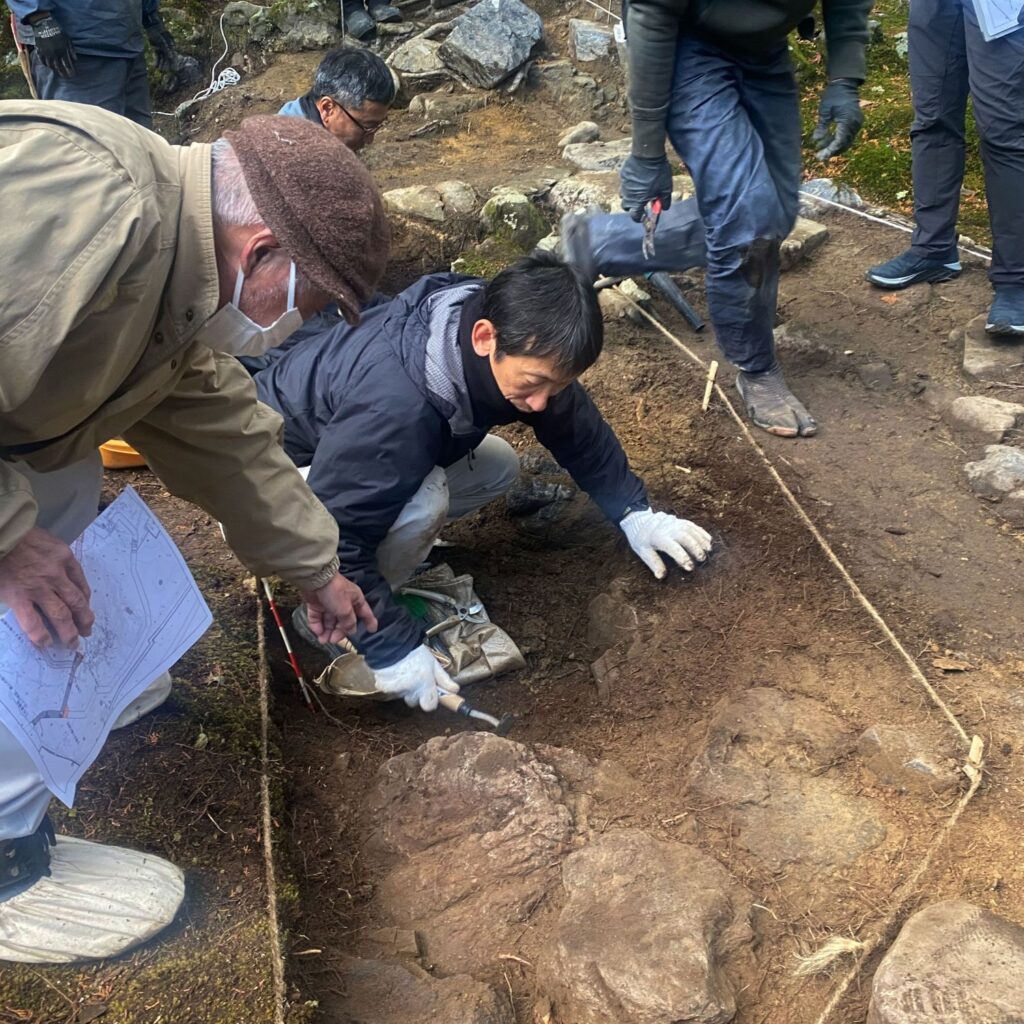
Following the excavations, we will carry out repairs, taking care not to disturb the remains. The project is subsidized by the government, as this is a Special Place of Scenic Beauty, although the temple will, of course, bear a considerable cost as well. In any case, please rest assured that we are making every effort to ensure that the repairs will be satisfactory to all parties.
Mountains and Bodies of Water Offer Neither Advantage Nor Disadvantage, for These Can Only Be Found in the Hearts of Men
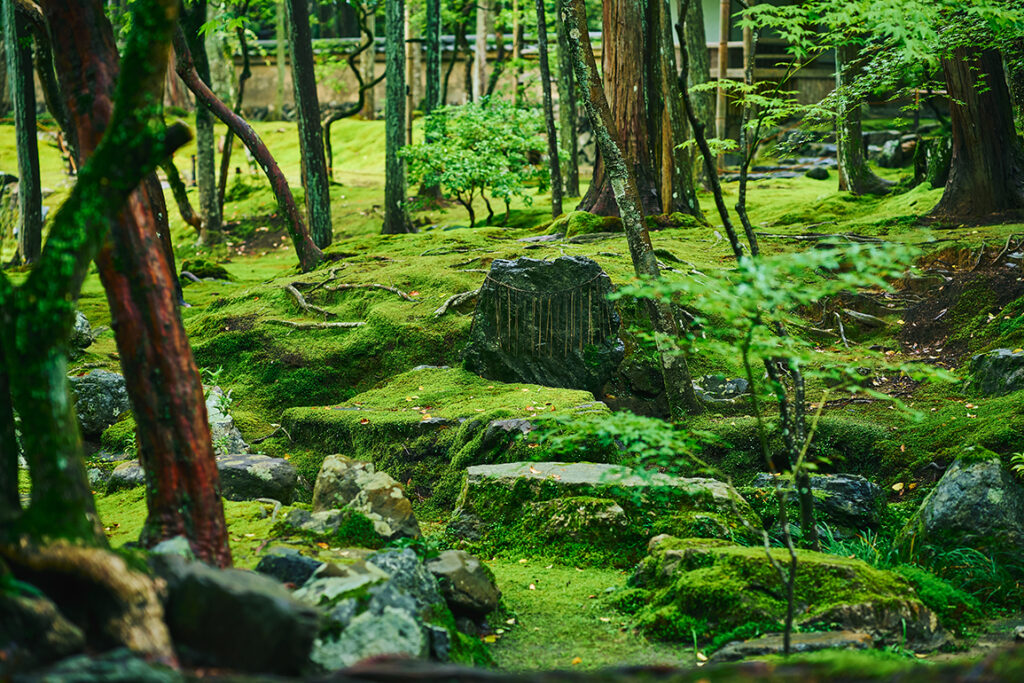
We will thoroughly investigate all possible aspects, but rather than simply recreating the scenery of the past, we need to consider what role these landscapes play and how they can be passed on to future generations, using the scenery that was created in the past as a foundation.
If we think back to the Muchu Mondoshu we discussed at the beginning of the first part, Muso Kokushi said that a true seeker of the truth would believe that everything in nature, including mountains, rivers, and plants, is part of their true nature, and that we should model ourselves after seekers of the truth who love mountains and bodies of water.
That said, I am not dismissing other ways of being. Mountains and bodies of water come in many forms, and people love them in different ways. It is not a question of whether they are good or bad. It is only by maintaining a spirit of seeking the truth that one can achieve harmony with the mountains and bodies of water. That is the most important thing to keep in mind when entering this garden.
Going forward, how are we meant to protect and live with this garden? The answer to this question can only be found through the spirit of seeking the truth.
Edited by: MIYAUCHI Toshiki
Written by: HOSOTANI Kana
Photographed by: Editorial Department
*These photos were with permission.


